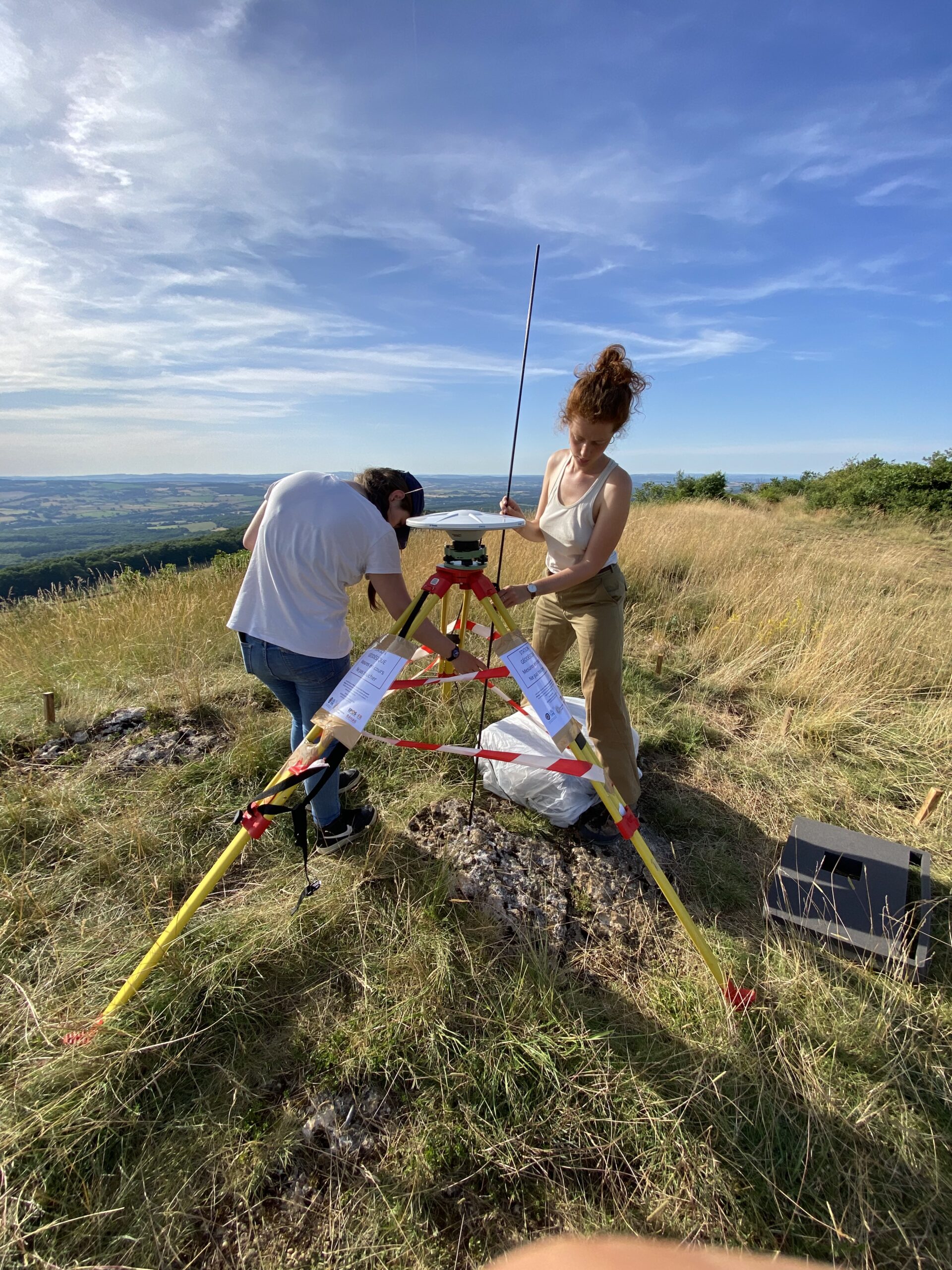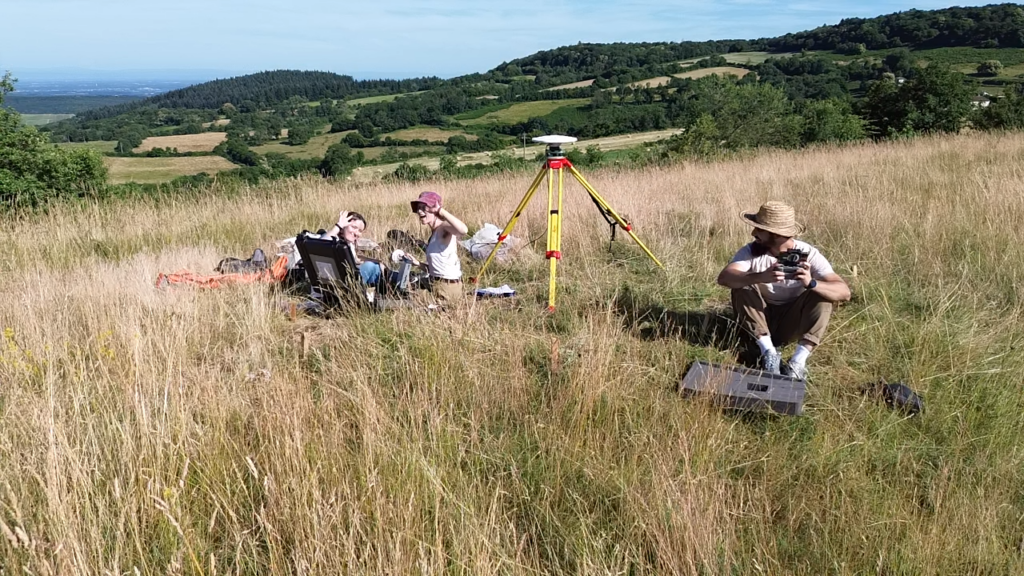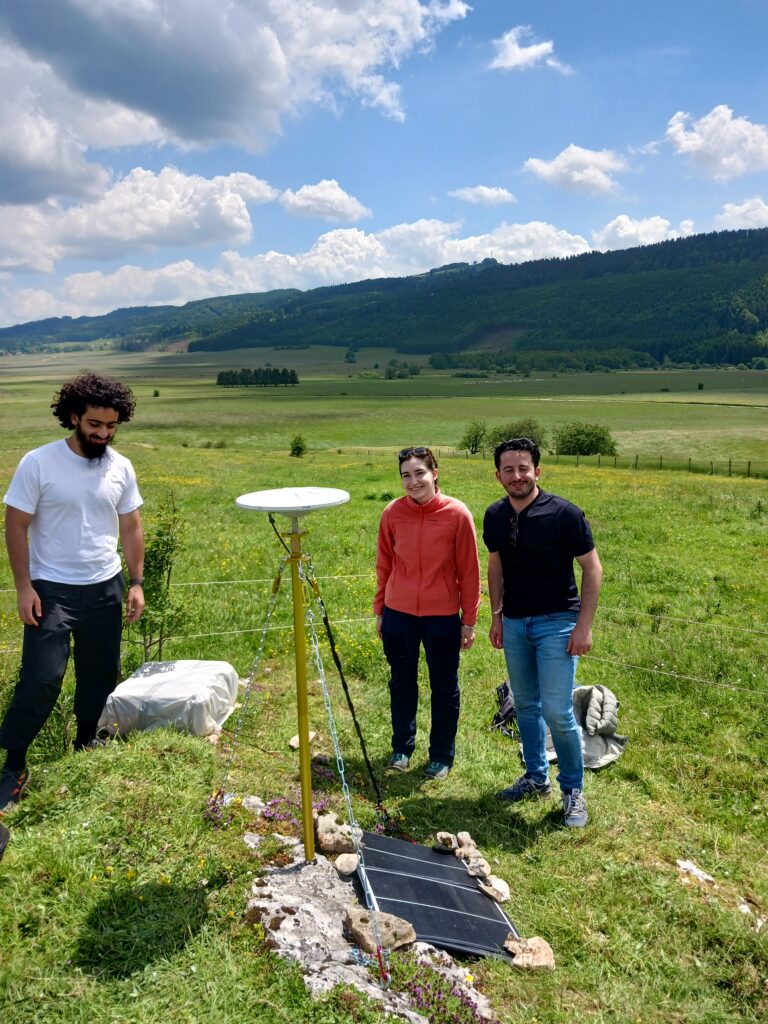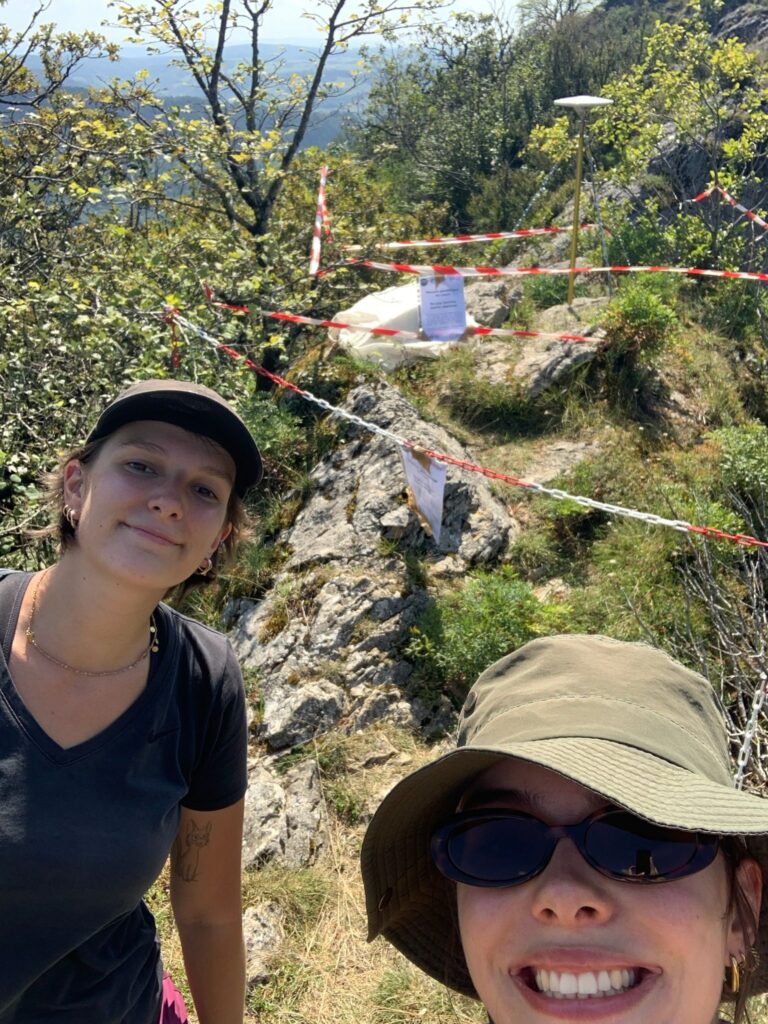OSU doctoral students measure the RéNAG materialized network
Volunteer doctoral students from LGL-TPE went into the field to participate in measurements of the SNO RéNAG network, one of the missions of the OSU of Lyon
For the second consecutive year, LGL-TPE students and doctoral candidates participated in remeasurement of the position of a network of geodetic markers—known as “semi-permanent”—of the RéNAG national observation service. At the hundred or so sites in this network, the Lyon OSU is responsible for measuring the position of ten points every two to three years covering the Jura and Morvan regions. Geodetic-grade GNSS equipment must be precisely installed directly above the markers and left for 72 hours to obtain, after processing, the markers’ positions to the nearest millimeter. These markers were installed in the 1990s, making it possible to track their movement over several decades and hopefully quantify the slow deformation of metropolitan France, where speeds of only a few millimeters per year are expected compared to the movement of the Eurasian plate.
Pairs of volunteers spent several days in the field, sometimes camping near the facility to ensure the integrity of the instruments. It was an opportunity to conduct geophysics outdoors and participate in a long-term community effort!
If you are interested in participating in these measurements, contact Marianne Métois, local representative for SNO RéNAG.



